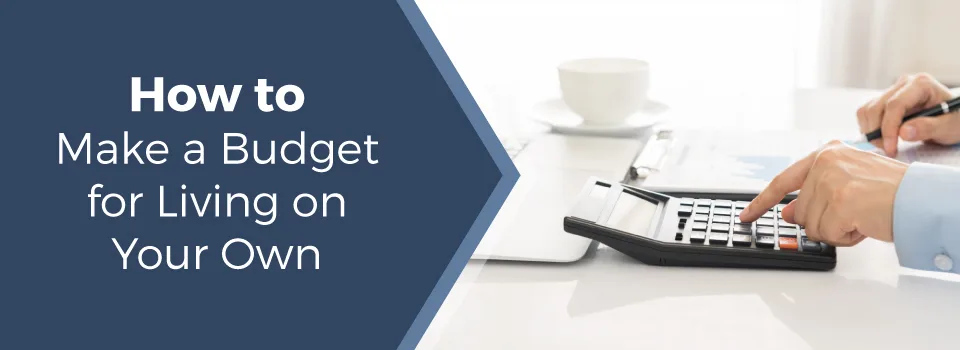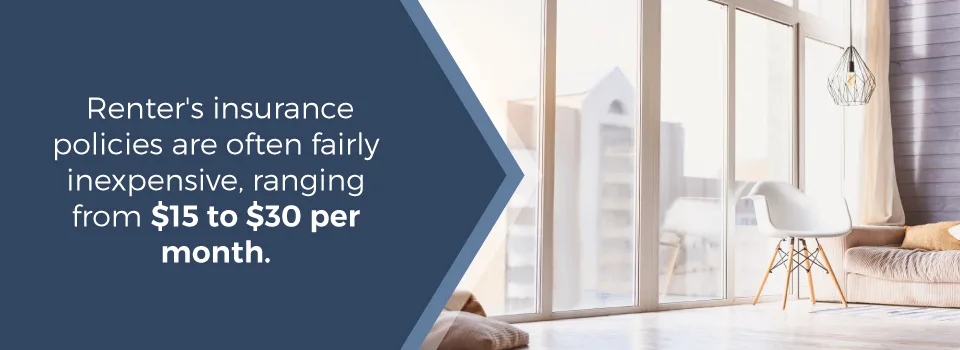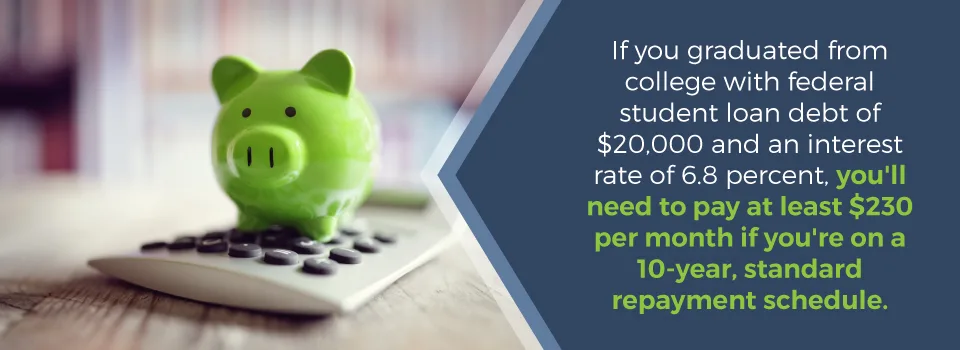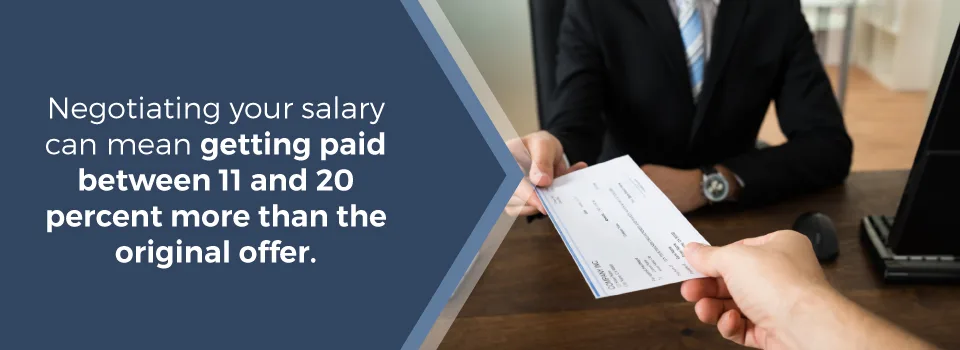
Finally! You’re ready to move into your own place, after living with your parents or in a dorm for several years. Although you have a job and some income, you’re not sure what you can afford or how much your living expenses will be.
That’s where making a budget for living expenses can come in handy. If you have an idea of what you’ll be spending each month, you’ll have an idea of whether your income is going to be enough to support your new lifestyle. You’ll also have an idea of whether you’ll be able to save for certain financial goals or if you’ll be left struggling to scrape by.
Putting together a budget for the first time can seem challenging. After all, you’re starting completely from scratch, and you might not even know where to look first. This guide to budgeting will help you figure out what you can afford and help you learn how to budget bills and other regular expenses.
Everyday Living Expenses
Some costs are unavoidable. In the modern age, you can’t do without electricity or an internet connection. You also need food, although the cost of that can vary widely. Here’s a list of typical monthly expenses. Consider these costs absolute necessities when creating your budget.
- Housing: Housing costs are typically either your monthly rent or your mortgage if you’ve already purchased a home. Housing is often the biggest living expense people have each month, though how much you end up shelling out for a house or apartment depends in large part on where you live.
- Utilities: When you’re a renter, some utilities might be included in the monthly cost of rent. But that’s not always the case. Utilities can include your gas bill, electric bill, and water/sewer bill in some instances. The cost of your gas, electric or water bill depends on a variety of things, including how insulated your apartment is, the weather near your home and how energy efficient your appliances are.
- Insurance: Necessary insurance can include health insurance, auto insurance and renter’s insurance. The exact amount you’ll pay is based on how much coverage you have, your age and whether or not your employer chips in (in the case of health insurance). Renter’s insurance policies are often fairly inexpensive, ranging from $15 to $30 per month.
- Internet/phone/cable: It’s difficult to get by without some sort of connection these days, which is why internet/phone/cable is in the necessary expenses category. How much you pay for it depends on what you end up purchasing. The average cost of a broadband internet connection is around $55. The cost of a phone plan with unlimited data might be anywhere from $55 to $75 per month depending on the carrier.
- Groceries: You need to eat, so there’s no way to avoid the cost of food as part of your budget. How much you spend depends on your dietary preferences, though. The USDA has food cost recommendations based on sex, age and preferences. A female between the ages of 19 and 50 might spend $164.20 per month for food on the “thrifty plan” or as much as $326.70 per month on the “liberal plan,” for example.
- Health/personal care: If you take medication regularly or just need to buy shampoo or soap, you should leave room in your budget for it. Like food, the amount you budget for health or personal care depends on your preference. Your expenses will be lower if you buy drugstore products or store brands or higher if you need to buy department store brands.
- Transportation: Unless you live in an area where you can comfortably walk everywhere, you’ll need to budget for transportation expenses. Those expenses might include a weekly or monthly pass for public transportation or the cost of a car payment and gasoline.

Understanding Housing Costs
Since housing or rent costs tend to eat up so much of your budget or income, it’s important to have a good grasp on what you can afford before you sign a lease. Often, you won’t be able to rent a place unless you have a certain amount of income.
One way that landlords and property management companies determine if a potential tenant can afford an apartment is to look at the person’s annual income. Ideally, your annual earnings will be at least 40 times your monthly rent. That means if you’re looking for an apartment that’s $900 per month, your landlord will want to see an annual income of at least $36,000.
Another guideline that can be helpful is to try and limit your total housing costs to under 30 percent of your total income. That means if you earn $3,000 per month, your total housing costs should be $900 or less, including the cost of utilities.
As housing costs become more and more expensive compared to income, sticking to the 30 percent rule can be tricky, if not impossible. That’s why it’s important to weigh features and amenities of an apartment against what you’ll end up paying. For example, if you find a place that ends up being more than 30 percent of your monthly income, but it’s close enough to work that you can walk every day, you may be able to reduce your transportation expenses. Or, if you find a place that includes cable and internet, plus other utilities, you might be able to swing it even if you’re technically over budget.

Other Things to Include in Your Budget
Housing, utilities and other necessities aren’t the only things you need to budget for each month. You also want to plan on saving, paying off debts and leaving a bit of room for fun.
- Debt Repayments: Depending on your circumstances, repaying debt can account for a significant portion of your monthly budget. For example, if you graduated from college with federal student loan debt of $20,000 and an interest rate of 6.8 percent, you’ll need to pay at least $230 per month if you’re on a 10-year, standard repayment schedule. You can lower that amount by switching to an income-based repayment plan, or you can increase it if you want to get out of debt even faster.
- Savings: It’s a good idea to get in the habit of saving–even if it’s just $20 per month–as soon as you start out on your own. You can start low and increase the amount you save as you pay off debts or get a raise. If you do have enough income to cover savings each month, try to set aside between 10 and 20 percent.
- Restaurants/Entertainment: It’s easier to stick to your budget if you’ve allowed yourself some room for fun. Even if you’re not earning that much right now, give yourself some room in the budget, such as $20 a month or so for some entertainment.
- Clothing: Clothing is technically a necessity, but it might not be something you buy every month. Usually, it’s recommended that you spend 5 percent of your income on clothing. That amount might be lower if you’re not really into fashion or if you’re a seasoned thrift store or consignment shopper.
- Miscellaneous: Some people might tell you that every single expense should have a category in your budget. But there are plenty of expenses that might crop up once or twice or that might not fit in anywhere else. Try to keep this category as small as possible, though, no more than 1 or 2 percent of your income.

Putting Your Budget Together
When you put together your first budget, you need to know two things. You need to know your monthly income and your monthly expenses. Take a look at your paystubs from the last few pay periods and figure out the average you earn every month. If you get paid the same amount every time, figuring your monthly income will be super easy.
Calculating your expenses can be trickier, as they tend to change. Divide your expenses into two categories:
- Fixed: Fixed expenses include your rent, loan payments, savings contributions, insurance payments and some utilities. If you have subscriptions, such as Netflix, that stay the same every month, count those in the fixed expense category. Some methods of budgeting, such as the 50/30/20 rule, recommend spending no more than half (50 percent) of your take-home pay on fixed costs.
- Variable: Variable expenses can include some utilities, food, groceries, and miscellaneous. To keep yourself from going over budget in this category, use the higher amount as your estimated monthly amount. You can also use a percentage, such as 30 percent of your income, to make sure that you’re not overspending in the variable expenses category.
Popular Budgeting Styles
It’s very likely that there’s a budgeting style out there to fit your financial situation and your spending/saving style. Some different types of budgets include:
- The Envelope System: Cash is king in the envelope system, which is why some people like it and others loathe it. Every time you get paid, you divvy up the amount, in cash, into a series of envelopes. You might put $200 in your groceries envelope, $100 in your internet/phone envelope and $50 in your entertainment envelope. Once you’ve spent that $50 on entertainment, there’s no more spending in that category for you, for the rest of the month at least.
- Zero-Based Budgeting: With zero-based budgeting, you start your budget over from zero at the start of the month or pay period. Instead of living off of the checks you’ll earn this month, you live off of the checks you received in the previous months. The goal is to have your income minus expenses equal zero for each month, so every single penny you earn needs to go somewhere, whether it’s to a movie ticket, savings or additional debt payment.
- Tracking with a Spreadsheet: Tracking with a spreadsheet or using a monthly budget calculator or software program can help you track expenses and income, but won’t necessarily change your spending habits. Some people find using a spreadsheet or software to be the easiest way to pay attention to what they’re spending and to make sure they don’t go overboard on non-essentials.
- 50/30/20 Budget: The 50/30/20 budget gives you a good idea of how much you should be spending in each category. For example, 50 percent of your take-home income goes to your regular, fixed expenses, 20 percent goes towards debt repayment or savings goals, and the remaining 30 percent is for variable or flexible spending.
What to Do If Things Don’t Add Up
Putting together a budget that works depends on one key thing. Your income needs to be the same as or more than your monthly expenses. Unfortunately, that’s not always the case. If your income is less than your expenses, putting together a budget can help you avoid getting into debt, as you can clearly see the state of your finances.
If things don’t add up the way they should when you make your budget, you have two options.
Reduce Your Living Expenses
The first option if your income is less than your expenses is to find ways to lower your living expenses. Being able to reduce your expenses is based on the assumption that you’ve not already cut back as much as you can. Ways to lower your cost of living include:
- Reduce Your Rent: You might end up paying less each month by moving into a two-bedroom apartment with a roommate instead of living on your own in a studio or one-bedroom.
- Lower Your Non-Essential Spending: Non-essential spending should be among the first to go. You don’t have to eliminate this entirely, but you should look for ways to cut back. That can mean buying clothing secondhand or only buying clothes when you need them. It can also mean cooking at home more or limiting your nights out with friends to once a week. Another option is to reconsider the brands you buy. Do you regularly shell out for MAC when Cover Girl would do the trick or do you purchase the name brand food when the store brand is just as good?
- Rethink Your Transportation: You might need to have access to a car, depending on where you live. But if you have a car payment, it might be more cost-effective to trade in your vehicle for a cheaper model and get rid of that payment completely. Another option is to combine your trips so that you spend less on gas or to limit how much you drive on the weekends to lower your gas bill. Carpooling is another way to reduce your transportation costs.
- Consider Refinancing: Depending on the type of debt you have and the interest rate, refinancing might save you a considerable amount each month. Just make sure to read the fine print and pay attention to the fees involved in refinancing.

Increasing Income
Your second option, if your income is less than your expenses, is to find a way to boost your income. There are several ways you can increase your income.
- Get a Second Job: Taking on a part-time job is a surefire way to make more money, but it can also mean you have less time to spend doing the things you enjoy.
- Start a Side Hustle: Whether it’s taking wedding photos on the weekend or making crafts to sell at fairs or online, a side hustle can let you explore a hobby or interest and make money at the same time. Side hustling isn’t a surefire way to earn extra income, though, so it might not be the best option if you need to make more money ASAP.
- Ask for a Raise: If you have a performance review or a milestone coming up at work, use that as an opportunity to see if your company can give you more money. Make a list of all your accomplishments on the job and use that list to support your ask.
- Negotiate a Higher Salary at Your Next Job: If you’re changing positions, use it as an opportunity to land a higher salary and more income. Negotiating your salary can mean getting paid between 11 and 20 percent more than the original offer. Over the course of your career, that can mean earning as much as $600,000 more than if you didn’t negotiate.
Knowing what you can afford to spend on housing each month is the first step toward finding your first apartment. When you’re ready to start your search, check out the apartments available from Triple Crown Corporation. Whether you’re looking for a one or two bedroom, we have a variety of rental communities to fit your budget and your needs.





